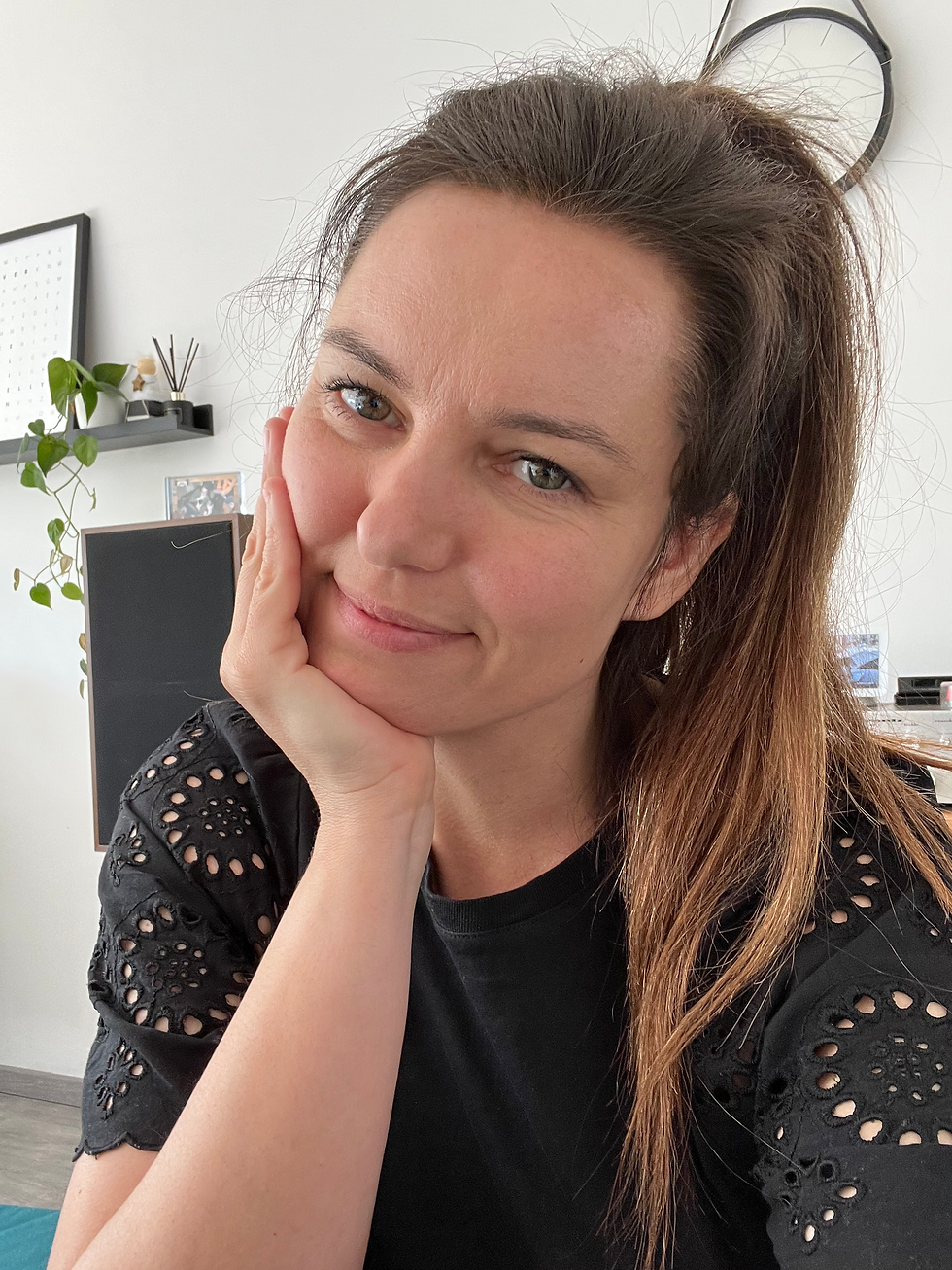Yoga Nidra as My Lifesaver
- Kelly Maes
- Dec 9, 2024
- 3 min read
The title may sound extreme, but I mean every word. I discovered yoga nidra during my years of being burnout, and it helped me in ways I sometimes still find hard to believe. When people ask for advice during challenging times—whether they’re dealing with stress, anxiety, burnout, depression, or sleep issues—I always recommend yoga nidra.
What Is Yoga Nidra?
Despite what the name might suggest, Yoga Nidra is nothing like the yoga you might be thinking of. Yoga nidra is a passive, deeply relaxing state between wakefulness and sleep. This ancient practice, first documented around 700 BC, is often misunderstood. It may appear to be just lying down and relaxing, but there’s much more to it. While the body remains still, the mind actively engages in a powerful form of meditation, also known as yogic sleep or effortless relaxation. Some studies show that 1 hour of yoga nidra is equivalent to 4 hours of sleep, and my experience can certainly confirm that.
Yoga nidra is typically practiced lying down, with a teacher guiding the session. The practice draws attention inward, allowing us to navigate the space between wakefulness and sleep. In this state, the body finds its natural equilibrium, or homeostasis—breath balances and quiets, unconscious and conscious aspects of the mind reveal themselves, and we enter a profound state of blissful awareness.
I won’t delve into too much detail because I believe it’s something you must experience to fully understand.
My Journey with Sleep and Rest
I used to pride myself on needing little sleep, feeling that every minute awake was productive time. But during my burnout, I realized I had ignored my body’s signals, living in chronic stress without the ability to slow down or relax. As a child, I loved to sleep as long as possible. It didn’t make sense that as an adult, with so many responsibilities, I needed less sleep.
During my burnout, I relied on yoga nidra to get through the day. Unlike other techniques, it required no effort—I just had to lie down, close my eyes, and listen. As I began to recover, I continued practicing yoga nidra because I still lacked the energy to make it through a full day. For years, I practiced after lunch, and it felt like getting an extra night’s sleep.
Even now, I still practice yoga nidra, especially during stressful times, when my mind is overwhelmed, or when shorter, darker days affect my energy levels.
Shame Dies When Exposed to Light
For a long time, I didn’t tell anyone I practiced yoga nidra. It looks like you’re sleeping, and I wanted to show people I had fully recovered—that I didn’t need those “energy boosts” during the day. I even locked myself in the bedroom to practice, not wanting my husband or son to see me. However, I disliked practicing in bed because I associate it with nighttime, and after spending so much time bedridden during my illness, I didn’t want to see my bed during the day.
Eventually, I started practicing on the sofa with headphones, telling my husband and son not to disturb me. It also helped with not falling asleep. At first, I felt ashamed, but that feeling faded as I reframed my perspective. I began to see it as modeling self-care and compassion—for them and for myself.
We’re often afraid to show when we’re not productive, perpetuating unhealthy standards for ourselves and others. But nothing will change unless we normalize taking care of ourselves. Not just by talking about it, but by showing people.I hope to inspire my husband, son, and others to embrace rest and self-care. That’s why I now share my yoga nidra practice with family, friends, clients, and, finally, here on the internet.
Want to give it a try?
You can practice Yoga Nidra in a yoga studio with a live instructor, but there are also plenty of YouTube videos available. I prefer to practice Yoga Nidra on my own rather than in a group, but of course, that’s a personal preference. There are so many online videos, so I’d recommend trying different ones to see how they feel for you. Some people prefer certain voices over others, and it’s important to find a voice that feels truly soothing to you. I would recommend to start with the longer versions and then go to the shorter ones. Since it's new to the brain, it might take some time for it to 'trust' it and allow you to relax.
My go to videos
My all-time favorite channels are Sarovara Yoga by Ally Boothroyd and The Mindfull movement.
Btw This is not sponsored but my honest opinion :)
Love,
Kelly



Comments